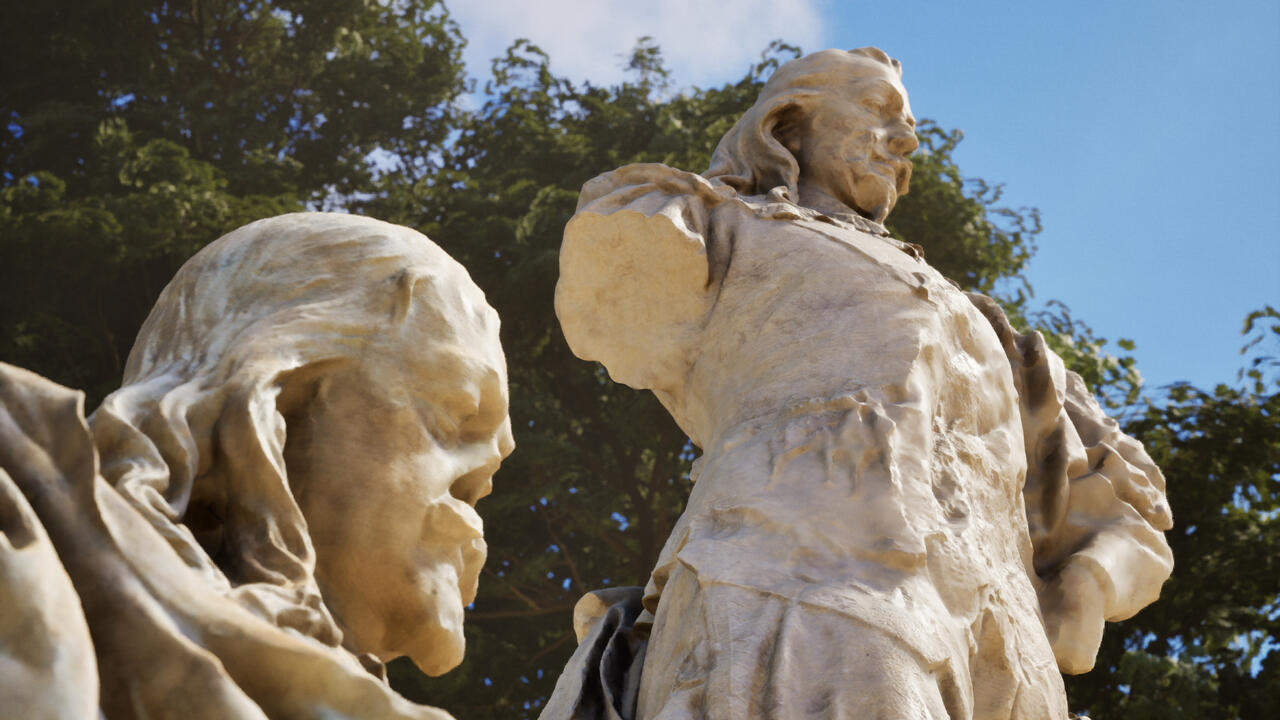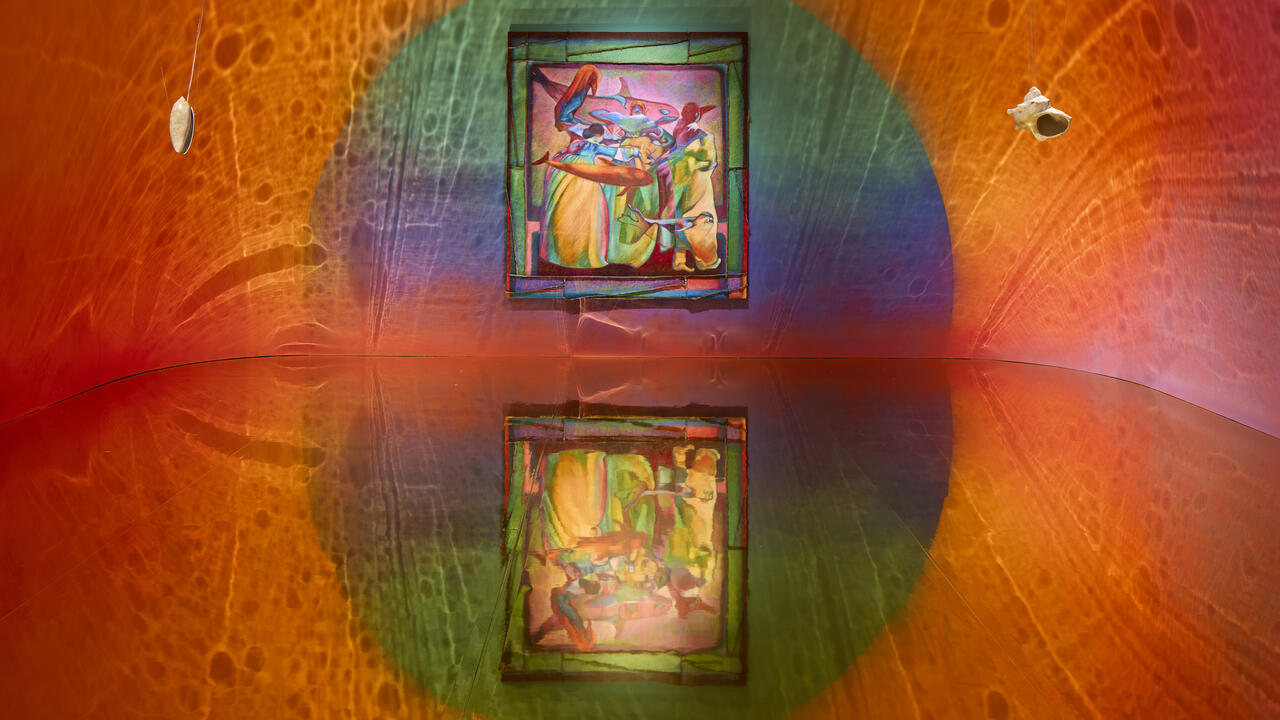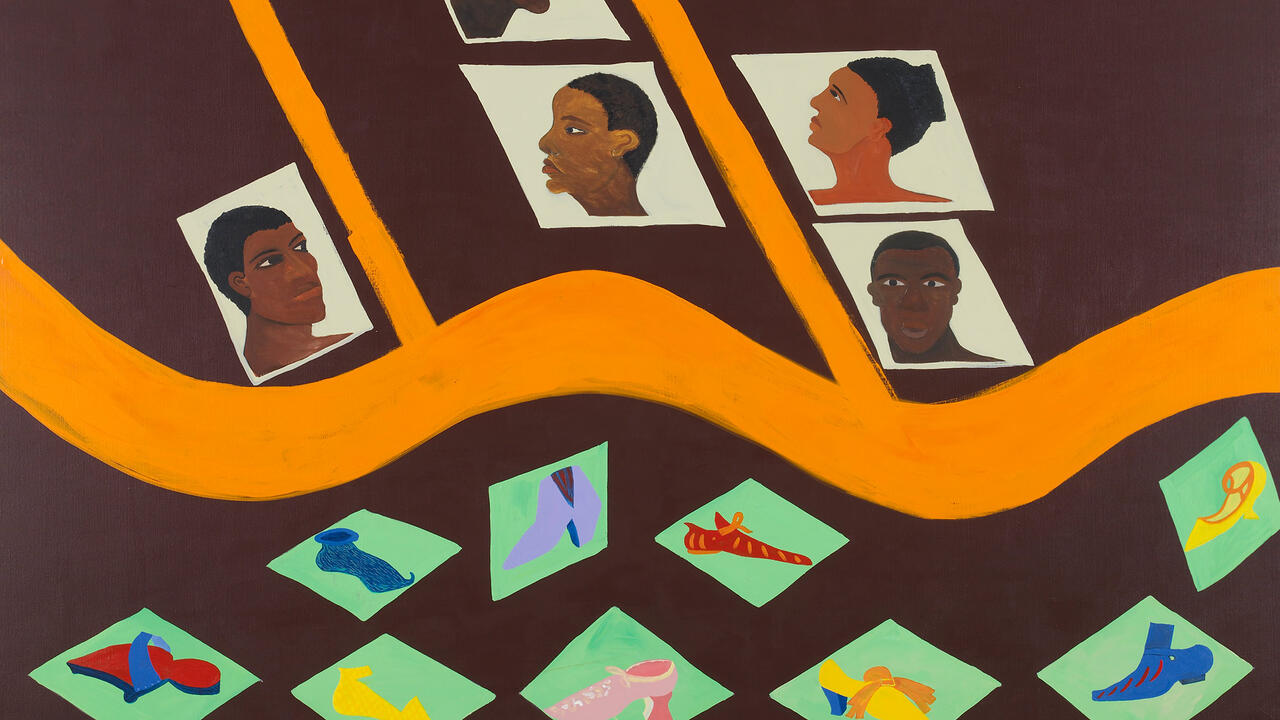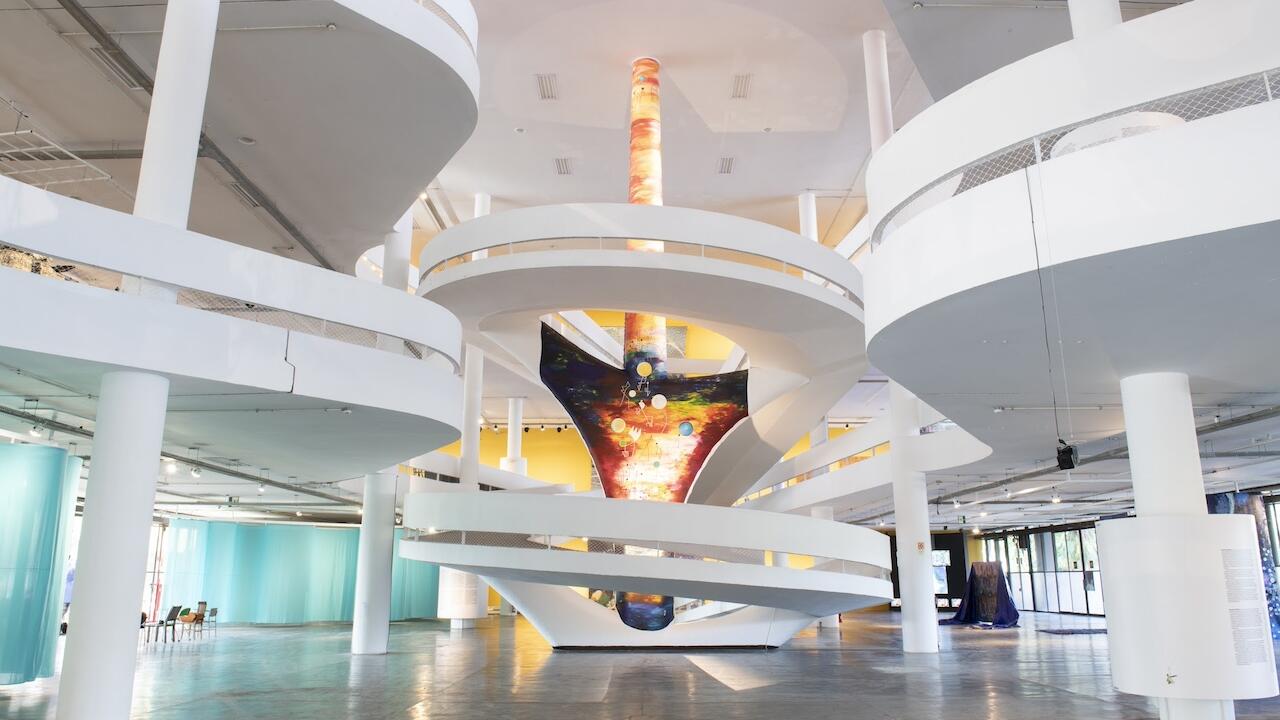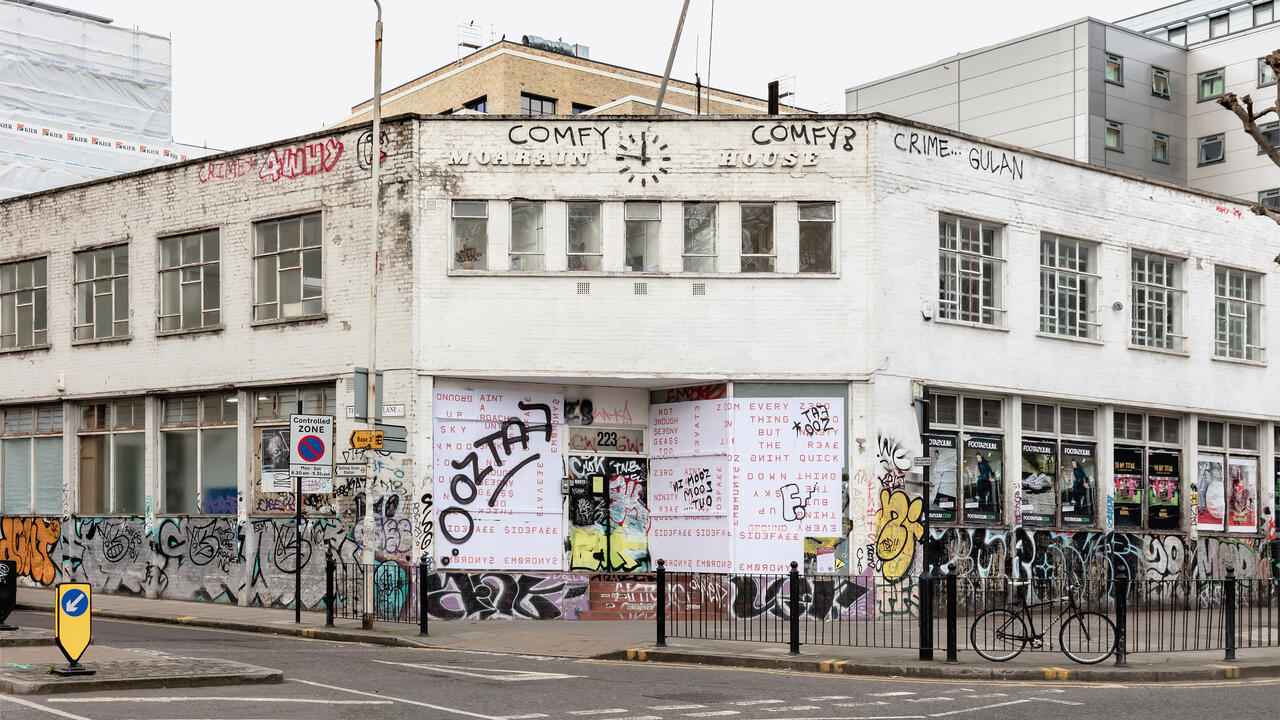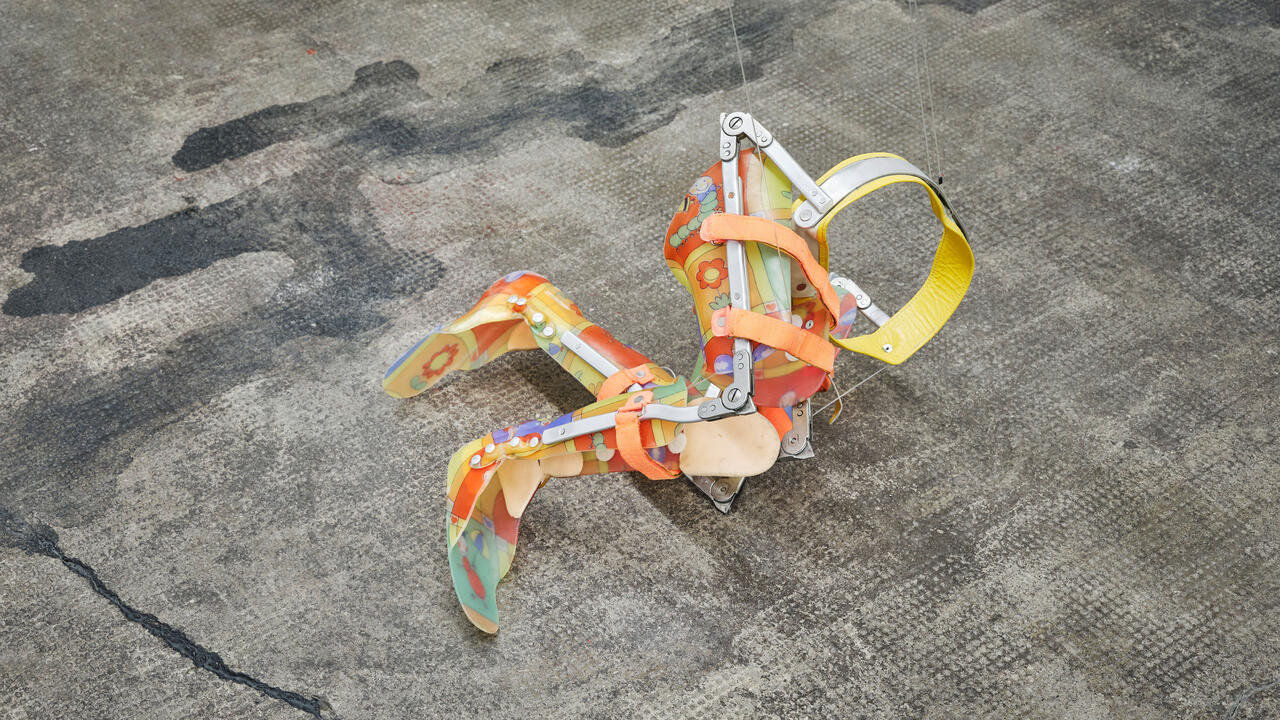The Year in Review: Frieze Editors on Art in 2022
From the rise of sculpture to the return of landmark art events, three frieze editors discuss the year in art
From the rise of sculpture to the return of landmark art events, three frieze editors discuss the year in art

Vanessa Peterson Let’s start by discussing the evolution in digital art forms over the past year – a topic on many people’s minds.
Terence Trouillot Personally, I’m most interested in Decentralized Autonomous Organizations (DAOs), which we featured in the November/December issue of frieze, and how artist communities can raise capital through blockchain technology. I’ve seen increasing traction behind ventures such as Kelly Huang’s Arkive, a DAO that aims to decentralize institutional collecting outside of museum boards. That feels notable.
Marko Gluhaich The year began with many institutions attempting to ride the wave of NFT success: the David Salle retrospective at the Brant Foundation in Connecticut, for instance, ended with an NFT room. But that enthusiasm has waned, especially since the recent volatility of the crypto market.
In his column for Vanity Fair about this year’s Art Basel Miami Beach, Nate Freeman wrote that the number of emails about NFTs he received that month was 129 while the number of times he heard the word NFT said within the art fair itself was zero. It’s tongue-in-cheek, of course, but it’s also not far off the general apathy felt towards the medium. DAOs, on the other hand, exemplify how people are learning the various ways to use blockchain technology – an awareness precipitated by this shift away from NFTs.

TT For me, the most exciting thing about NFTs is their capacity for inbuilt encryption that can be used to funnel money towards activist pursuits. A noteworthy example is Pussy Riot’s NFT series ‘Proof of Protest’ (2022), launched to support female reproductive rights following the overturning of Roe v. Wade by the US Supreme Court. There was also this excitement around NFTs restructuring the gallery system and enabling artists to sell their work independently.
VP Dan Hicks’s essay about restitution and the politics of 3D printing and NFTs – also published in the November/December issue of frieze – offered another perspective on how technology can change our engagement with cultural heritage. Projects like Looty – in which the proceeds from NFTs of looted objects in western museums are funnelled back towards African artists and creatives – seem like a fascinating way of circumnavigating roadblocks that have prohibited people from accessing their cultural heritage.
TT It’s interesting that, in tandem with these advances in art-world tech, there’s also this movement towards collectivity and community-based work: technology can help connect people across borders in a way that’s never been done before.
In terms of collectivity, I think documenta 15, curated by ruangrupa, was a triumph. Although the event was sadly mired in controversy, for many in the art world, particularly curators, there was much excitement about what it meant to organize a show around collective practices. People have been talking about the renaissance of relational aesthetics or social practice, but this feels quite different.
Cecilia Alemani and Sohrab Mohebbi both received significant critical acclaim this year for curating, respectively, the Venice Biennale and Carnegie International – two of the oldest international art exhibitions. But, for me, documenta 15 stood out for the possibilities it offered for showcasing intangible work.

VP What was your experience of this year’s Whitney Biennial, co-curated by David Breslin and Adrienne Edwards?
TT I think the best part was the installation dedicated to A Gathering of the Tribes, the literary magazine founded in 1991 by US poet Steve Cannon, which was very special. Personally, I preferred last year’s New Museum Triennial, co-curated by Jamillah James and Margot Norton, which closed in early 2022. Some of the work, such as Laurie Kang’s Great Shuttle (2020–21) – an architectural wall affixed with flex tracks, steel studs and photosensitive paper and imagined to be a living body – was in a similar vein to this year’s Venice Biennale and what I anticipate next year’s Gwangju Biennale, curated by Sook-Kyung Lee, might comprise: lofty, surrealist ideas that are grounded in politics.
MG Personally, I felt this year’s Whitney Biennial was too safe. There were some really good works by some great artists but, curatorially, it was incoherent. During the press preview, Breslin and Edwards posed the question: how can you curate a show that responds to such tumultuous times? Based on their exhibition, it seemed that the answer was to keep it so opaque so as to accommodate any current event. It was trying to say so much while saying nothing at all.
TT For many years now, the Whitney Biennial has sought to complicate its remit – to showcase the best in American art from a particular period of time – because that approach now seems very limited. Today, most large-scale international art fairs place an emphasis on transnationality. Having to think about that within the remit of American art is interesting but also challenging and potentially limiting – particularly now, when everything feels so globalized. It begs the question: does the Whitney Biennial still have a purpose? This year’s Carnegie was a highly successful attempt to consider postwar America within a very international focus, which was a testament to Mohebbi as a curator, I think.
MG Fundamental to documenta 15 was the question of how to display collective practices and community-based projects out of context. One particularly compelling instance of this was the PAKGHOR social kitchen: an outdoor space in which meals were prepared and groups gathered to share stories and cuisines. Throughout, documenta 15 presented artmaking as an impulse, as a means of building community and relationships. I thought it was a fantastic show.

TT In our last round-up, we described 2021 as a year of painting. This year, particularly from what I saw at the Venice Biennale and at the New Museum Triennial, it was sculpture – especially conceptual sculpture – that came to the fore.
MG Yes, there was a lot of really strong sculpture and installation at the Whitney Biennial – including Aria Dean’s Little Island / Gut Punch (2022) and Rose Salane’s 64,000 Attempts at Circulation (2022). Those works were a highlight of the show, but also an example of a wave of younger artists making innovative and interesting conceptual art.
VP One particularly stunning show in the UK this year was Barbara Chase-Riboud’s ‘Infinite Folds’ at London’s Serpentine Galleries. By pairing hard and soft materials, like wool with aluminium, Chase-Riboud invests her monumental works with great tactility. This year’s Turner Prize winner Veronica Ryan – whose first solo show at Alison Jacques was a particular highlight of 2022 for me – also engages with the sculptural form. Another standout was Simone Leigh’s US pavilion at the Venice Biennale. In terms of younger artists, I was blown away by Emii Alrai's large-scale sculptural installations at Newcastle's Workplace Foundation and the Bluecoat in Liverpool, interrogating the politics of western museological display, ruins and empire.

MG Many of my favourite shows this year have been sculpture. Early in the year, I was taken by the group exhibition ‘Lifes’ at the Hammer Museum in Los Angeles, and especially by Nina Beier and Bob Kil’s All Fours (2022), in which performers activated a series of Beier’s lion sculptures. In the summer, curator Lola Kramer, in tandem with anonymous gallery, organized the fantastic ‘7 Gardens’ project in New York. Wandering around the seven public gardens in my East Village neighbourhood, I appreciated the novel ways in which art can unite New Yorkers by staging community-centred events in locations that are tragically underutilized.
VP Do you think the curatorial premises of these large-scale international exhibitions translate to our current reality?
TT I thought it was interesting that the title of the forthcoming Gwangju Bienniale, ‘Soft and Weak like Water’, is eerily similar to that of the New Museum Triennial, ‘Soft Water Hard Stone’. Both serve as loose metaphors for the multiple global crises we’re currently facing. Yet, while they sound complex and appealing, it’s hard to say what purpose they actually serve.
MG In the São Paulo Biennial press materials, the curatorial team – Manuel Borja-Villel, Grada Kilomba, Diane Lima and Hélio Menezes – describes its approach to curation as ‘decentralized’ and ‘horizontal’, and I’m excited to see how they will realize what they have defined as an ‘immeasurable set of possibilities of living time’. After the dynamism exemplified by ruangrupa at documenta 15, our concept of what is possible with collective curation has shifted.
VP I’m curious to see how the Sharjah Biennial will fare, given that it will be Okwui Enwezor’s final curatorial project, executed posthumously by an advisory team and curated by Hoor Al Qasimi, president and director of the Sharjah Art Foundation. Enwezor, who sadly passed in 2019, has such an important curatorial legacy and I wonder how his Sharjah Biennial will sit alongside Gwangju and São Paulo or Bamako Encounters, the African photography biennial curated by a collective of artists and curators. For me, there are many questions concerning the evolution of curatorial practice over the last few years, and I think these forthcoming biennials will offer us some constructive insights.
Main image: Alison Jacques: Veronica Ryan, 2022, installation view. Courtesy: © Alison Jacques, London; photograph: Michael Brzezinski
Thumbnail: Simone Leigh, Façade, 2022, thatch, steel and wood, dimensions variable. Satellite, 2022. Bronze, 7.3 × 3 × 2.3 m (overall). Courtesy: the artist and Matthew Marks Gallery; photograph: Timothy Schenck. © Simone Leigh











